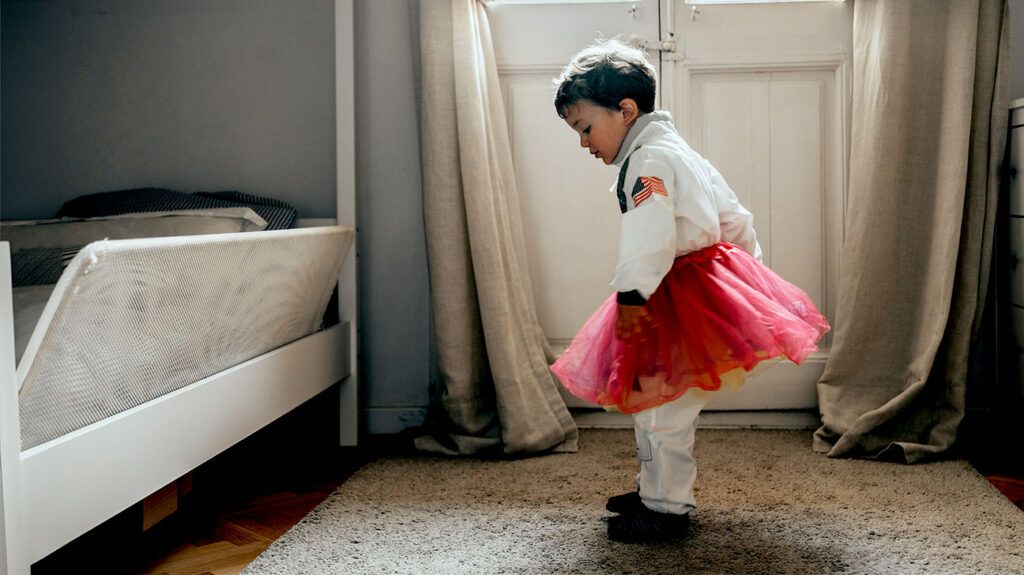Gender socialization is a fundamental development aspect, shaping how people perceive themselves and interact with the world.
Gender socialization is the process of a person learning and internalizing the norms, behaviors, and roles that a particular society expects of their gender.
From a young age, individuals experience exposure to specific messages about what it means to be male or female, influencing their behaviors, interests, and self-perception. A person internalizes societal expectations in relation to gender from their family, peers, education, and the media.
This article explores gender socialization and its underlying theories and effects on society.
A note about sex and gender
Sex and gender exist on spectrums. This article will use the terms “male,” “female,” or both to refer to sex assigned at birth. Click here to learn more.

Gender socialization refers to how society conveys expectations and norms regarding gender roles to individuals.
It is a complex process involving multiple agents of socialization, including:
- family
- education systems
- peer groups
- media
These agents collectively contribute to shaping an individual’s understanding of gender and their place within society.
From the earliest stages of life, children
What does gender mean?
Gender is a
For example, many cultures traditionally expect females to take on nurturing roles such as caregiving and homemaking while expecting males to be providers and protectors. Furthermore, females experience encouragement to be polite, gentle, and empathetic, while males are assertive, strong, and competitive.
Gender is distinct from biological sex, which refers to the physical and physiological differences between males and females. These differences include the reproductive organs, chromosomes, hormones, body composition, and secondary sexual characteristics.
Learn more about sex and gender.
Gender socialization manifests in many aspects of daily life, beginning at a very young age and continuing throughout an individual’s life. It may include:
- buying dolls and play kitchens for females, while males receive trucks and action figures
- encouraging young males to participate in physical activities and sports while guiding females toward nurturing activities such as playing house
- providing books depicting males in leadership roles and females in supportive roles
- dressing children in attire that people deem appropriate to their gender
- describing females as nurturing and emotional in the media, while males are strong and brave
Gender socialization occurs through various social channels and is present in daily life. Here are
- Family influence: Parents and family members may reinforce gender roles through the toys they buy, the activities they encourage, and the behaviors they model.
- Peer groups: Friends and social circles can cement societal expectations through shared activities, interests, and peer pressure.
- Education systems: Schools may uphold gender norms through a curriculum and dress code underpinning traditional gender roles.
- Media representation: Television shows, movies, advertising, and social media frequently depict gender-specific roles and behaviors, emphasizing what society considers acceptable or desirable. These representations influence how individuals view themselves and others and may perpetuate stereotypes.
Several theories explain how gender socialization occurs and how individuals internalize gender roles.
Social learning theory
This theory suggests that children learn gender roles
Cognitive developmental theory
This theory proposes that children actively construct their gender identity as they mature, using cognitive processes to understand and internalize gender norms. Initially, they recognize gender differences on the basis of observable traits, such as clothing and hairstyles. As they age, they develop a more sophisticated understanding of gender as a stable and consistent trait. This cognitive realization leads them to seek out and adopt gender-appropriate behaviors, aligning themselves with societal expectations.
Gender schema theory
Schemas are mental frameworks that help individuals process and categorize information. According to this theory, children develop gender schemas on the basis of their cultural environment, which guides their perceptions and behaviors. For example, a child with a well-developed gender schema for “boys” may categorize playing with trucks or engaging in sports as boy-appropriate. This schema then guides the child’s preferences and actions, reinforcing gender-typical behaviors and interests.
Learn more about gender identity.
Gender socialization profoundly affects society, shaping individual behaviors, relationships, and societal structures. Here are some key impacts:
- Perpetuation of gender roles: Gender socialization reinforces traditional gender roles, often limiting opportunities, perpetuating inequalities, and leading to a division of labor on the basis of gender. This division strengthens gender stereotypes and limits individuals’ potential, contributing to systemic disparities in various sectors, including the workplace, education, and politics.
- Influence on identity and behavior: Gender socialization shapes self-concept, interests, and career choices, often steering individuals toward gender-typical paths. This influence can restrict personal growth and limit the diversity of skills and perspectives in different fields. Additionally, the internalization of gender norms can affect self-esteem and mental health, as individuals may find it difficult to conform to societal expectations that do not align with their identities or abilities.
- Impact on relationships: Gender norms influence interpersonal relationships, affecting communication styles, power dynamics, and expectations within personal and professional interactions.
Gender socialization plays a
As a result, people may feel pressure to conform to these expectations, which can influence their career choices, interests, and interpersonal relationships.
Gender socialization is a fundamental process that shapes how individuals perceive and perform gender roles within their society. Its pervasive influence shapes societal structures, individual behaviors, and interpersonal dynamics by reinforcing traditional gender roles and stereotypes.
Society can better address the resulting inequalities and limitations by understanding how family, educational systems, media, and peer groups contribute to this process.
Promoting awareness and challenging these norms are critical steps toward achieving gender equality and allowing individuals to reach their full potential, free from societal expectations.
